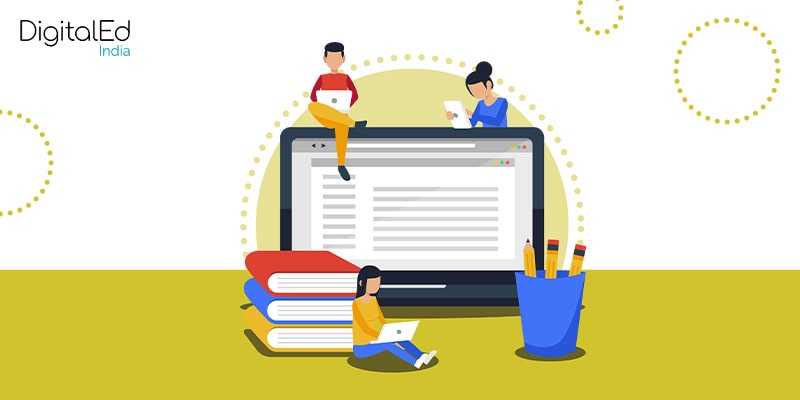Top Benefits of A Flipped Classroom
When you ask students to complete homework, they may feel lost and confused. However, the purpose of the assignment is to reinforce the lessons the student is learning. The goal of a flipped classroom is to keep students engaged in the learning process and prevent them from leaving class early. A flipped classroom should begin with a brief assessment. This can be a simple quiz, smartphone survey, or clicker survey. It is essential to make the assignment engaging for students, as they may need to review a particular concept before proceeding. Flipped learning was invented by an education expert, Jon Sams.

Educators have rediscovered the importance of personalizing the learning experience and focusing on individualized learning goals. With a flipped classroom, students must read more material before attending class. In addition, they should also do more assignments outside of class. It is not uncommon for students to finish a course early if they have homework. But many borrowers do not have this luxury. While a flipped classroom is a good idea, it should not be used without the teacher’s consent.
Despite the benefits, flipping the classroom can be difficult for some institutes. Creating digitized lectures can be a significant time commitment. While many instructors have experience with the flipped classroom, this can be a difficult transition for some institutions. Besides, a flipped classroom helps students develop a deeper understanding of the topic. And a flipped classroom also helps students build a stronger foundation for future learning.
Benefits to Students?
How Flipped learning works in the classroom is a common question in teachers’ minds, but how does it help students? A successful flipped classroom enables students to consume lesson materials at home, learning more efficiently. This model allows teachers to assign readings, films, and other resources to students and allows them to watch them at any time. By utilizing this method, teachers eliminate the need to spend two class periods watching a single film and instead focus on the student’s needs. Multiple benefits of a flipped classroom enhance student engagement in the learning activity.
Robust Learning Environment
With the flipped classroom, students can interact with teachers more, which leads to better learning outcomes. With a flipped classroom, students can complete their project-based work in the privacy of their homes. This means that students can spend more time working together, which is a great learning strategy and promotes collaboration. Due to this, students can catch up on missed classes without any extra work, which allows them to achieve a higher grade than they could have.
Interpersonal and Intrapersonal Development
A flipped classroom promotes the development of future-ready skills and helps students develop independent study habits. It also boosts the quality of exams, improves engagement, and fosters better communication between teacher and student. Creating a flipped classroom makes students more confident in their abilities and motivates them to learn more.
Autonomous Learning
Along with the benefits mentioned above, a flipped classroom also gives students more control over their learning. They can review material at their own pace, write down questions, and discuss the issues in class. With a flipped classroom, students can be more independent and take the time to understand the concept. This is a huge benefit to student achievement and behavior.
Conceptual Understanding
The flipped classroom model helps students gain a deeper understanding of a topic by allowing them to watch lectures at home before class. This allows students to apply their new knowledge in class while doing their homework. With a flipped classroom, students will have an opportunity to ask questions, collaborate, and build a deeper understanding of the subject. If a student misses a class, they can catch up more easily.
Deep Learning
When students complete homework, they can steer the discussion and ask for clarification. A flipped classroom also allows students to take control of class time. By allowing students to take the time to do their homework, teachers can spend more time on more important aspects of the course.
Benefits to Educators
Deeper Student Evaluation
In a flipped classroom, students are given the freedom to take the time to apply what they have learned in class. Moreover, a flipped classroom gives educators more time to analyze, create, and evaluate the students. The flipped classroom can help teachers learn and assess students more efficiently. This way, a flipped classroom can be an effective solution for many educational problems. As a result, a redesigned flipped classroom benefits teachers and students alike.
Create Flexible Teaching Environment
Using a flipped classroom methodology helps teachers create a more flexible teaching environment. It also allows students more time to create, analyze, and evaluate materials. Educators can focus more time on teaching and analyzing the students with a flipped classroom. This means they can focus on the actual learning process instead of simply explaining it to students. It is an excellent opportunity for a flipped classroom to involve students in their own education.
Qualities of a Successful Flip Learning Environment
Adaptability
A successful flipped classroom model is adaptable. This model allows students to complete homework assignments at their own pace. In addition, the flipped classroom model makes it easier for students to get targeted feedback from their teachers. The teacher can focus more on guiding the student’s learning. The flipped classroom allows for increased one-on-one interaction and student-to-one instruction.
More Time For Active Learning
Instructors spend more time facilitating active learning in a good flip learning environment. While lecturers are typically the primary source of information in a classroom, students are more engaged when they participate in the discussions. In addition to engaging students in active learning, the flipped classroom encourages the student to make connections between lecture material and real-world experiences. This model also encourages independent learning.